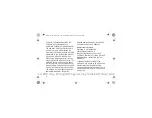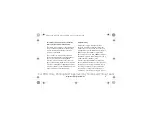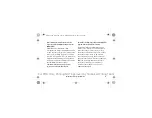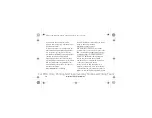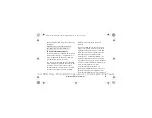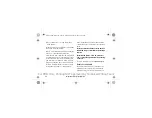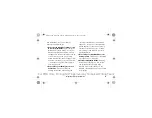
8
Important Safety Information
does not produce heating effects causes no
known adverse health effects.
The biological effects of radio frequency energy
should not be confused with the effects from
other types of electromagnetic energy.
Very high levels of electromagnetic energy,
such as is found in X-rays and gamma rays,
can ionize biological tissues. Ionization is a
process where electrons are stripped away from
their normal locations in atoms and molecules.
It can permanently damage biological tissues
including DNA, the genetic material.
The energy levels associated with radio
frequency energy, including both radio waves
and microwaves, are not great enough to cause
ionization of atoms and molecules. Therefore,
RF energy is a type of non-ionizing radiation.
Other types of non-ionizing radiation include
visible light, infrared radiation (heat), and other
forms of electromagnetic radiation with relatively
low frequencies.
While RF energy does not ionize particles, large
amounts can increase body temperatures and
cause tissue damage. Two areas of the body,
the eyes and the testes, are particularly
vulnerable to RF heating because there is
relatively little blood flow in them to carry away
excess heat.
Sprint_LT02_IIB_.book Page 8 Thursday, August 15, 2013 4:01 PM
For PRA Only, Printing NOT approved by Technical Writing Team




